Artificial Intelligence (AI) is not a buzzword anymore—it’s reshaping the way agencies operate, innovate, and deliver value. AI is quickly becoming essential for agencies that want to stay competitive and truly connect with their clients. However, with so many changes happening around AI, many agencies are still figuring out the best way to utilize it effectively.
In this blog post, we’re going to take a deep dive into the current state of AI for agencies in 2024. We’ll break down everything from the latest adoption trends to the practical ways agencies are applying AI, as well as a look at future opportunities. For a more detailed analysis, check out the full State of AI for Agencies in 2024 report.
Whether you’re brand new to AI or you’re looking to expand how you’re using it in your agency, this post is going to help you understand where the industry stands and where it’s headed.
Table of contents
- Understanding the agency landscape
- Key trends in AI adoption
- How agencies are leveraging AI for success
- Enhancing client services with AI
- How AI is impacting agency performance
- Benefits and challenges of using AI for agencies
- Looking ahead: The future of AI in agencies
- Practical tips for agencies to get started with AI
- FAQs on embracing AI in agencies
- How Birdeye can help agencies lead with AI
Understanding the agency landscape
AI is transforming agencies of all sizes, each adapting it to meet its specific needs. Birdeye surveyed 294 U.S.-based agencies in Q2 2024 to better understand this transformation.
Here’re some key stats about the range of agency profiles, showing how AI is useful for everyone—from small teams to large firms.
- Agency roles: Nearly half (46.6%) of respondents are in leadership roles, driving AI adoption from the top. Sales and marketing make up 18%, with 10.5% in project management.
- Agency size: Small and mid-sized agencies lead the charge, with 80% having fewer than 200 employees and 40% just 1-10 people. AI isn’t just for big firms—smaller teams are using it to stay competitive.
- Revenue distribution: Around 32.9% report annual revenue under $500,000, and 48% under $1 million.
- Client base: Top sectors served include professional services (44.9%), business services (39.8%), and healthcare (37.6%), showing AI’s broad impact across industries.
These numbers show that AI is reshaping agencies of all sizes, offering versatile benefits across sections. Now, let’s take a look at what’s driving AI adoption, and the most popular AI tools agencies are using.
Key trends in AI adoption
The adoption of AI in agencies is really starting to accelerate. In fact, the early adopters are already seeing some pretty transformative benefits from using it.
Let’s take a closer look at some of the key stats around AI adoption:
- 87% of agencies are now using or testing AI tools
- 75% of agencies have adopted AI in the past 2 years
- 79% of agencies plan to boost AI spending in the next year
- 51.5% of agencies use ChatGPT weekly for content, brainstorming, and automation
- 25.6% of agencies use Google Gemini, which integrates well with Google tools
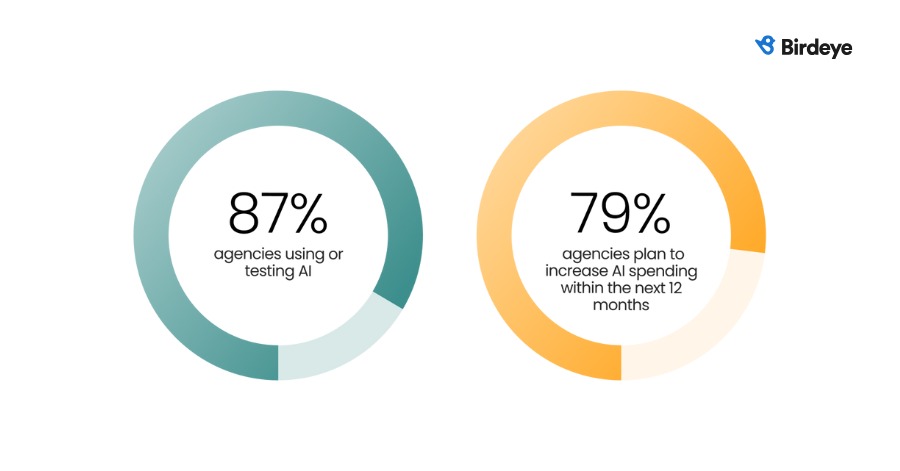
These trends make it clear that AI is no longer just about keeping up. It’s become a strategic move for agencies to gain a real competitive edge in this rapidly evolving industry.
Pro tip: Smaller agencies are encouraged to start with easy-to-use tools like ChatGPT for quick wins in content and client engagement, while larger agencies benefit more from advanced analytics and workflow automation tools, like Birdeye Insights AI, for deeper insights and operational improvements.
So, how are agencies putting AI to work in practical ways?
How agencies are leveraging AI for success
Agencies are using AI to streamline operations, enhance decision-making, and ramp up content creation, all while keeping pace with client demands.
Optimizing workflows and project management
AI is making project management smoother, automating repetitive tasks like scheduling and invoicing, and freeing teams to focus on creative work.
- 51.1% of agencies report productivity gains from AI-driven workflow optimizations, which minimize errors and speed up processes.
But it’s not just about efficiency. AI is also enabling smarter, data-driven decisions.
Smarter business intelligence and decision-making
With AI analyzing vast data, agencies can uncover trends and make better strategic decisions. AI-driven insights are helping agencies tailor their strategies, align campaigns closer to client goals, and improve overall impact.
- 33.6% of agencies report gaining deeper customer insights after implementing AI that helps them shape more effective, data-driven campaigns.
Birdeye Insights AI can be a powerful tool that helps agencies make smarter decisions using real business data. It pulls together information from online reviews, surveys, and local SEO to show exactly how customers feel about your brand and what they’re saying online.
This deep insight makes it easy to spot trends, compare your performance with industry standards, and get AI-powered suggestions to improve your client strategies. By turning complex data into actionable insights, Birdeye helps agencies deliver better results for their clients.
Content creation and strategy
Content creation has always been central to agency work, and AI is supercharging it by delivering high-quality, scalable content quickly.
Here’re some key stats:
- 45% of agencies are using AI to create blogs, articles, and website copy, ensuring consistency and quality across platforms
- 35% of agencies use AI specifically for social media content
- 33.6% of agencies use AI for web content and copywriting, keeping their digital presence fresh and relevant
These trends reflect that AI is revolutionizing content creation across different platforms, from drafting blog posts to generating social media copy. With these operational benefits, agencies are becoming more responsive and effective. Let’s look at how AI is enhancing the way agencies deliver client services.
SEO and digital marketing
AI is doing more than just creating content. It’s revolutionizing how that content reaches the right audiences.
- 30% of agencies now utilize AI to enhance their SEO and digital marketing efforts, improving search rankings, keyword targeting, and competitor analysis
By using AI, agencies are becoming more productive and creating content and strategies that truly deliver quality and relevance. The impact of AI goes even deeper when we look at how it’s transforming client services, which we’ll explore next.
Enhancing client services with AI
AI is reshaping how agencies deliver client services, making everything more personal, efficient, and impactful. By using AI tools, agencies can now automate routine tasks, analyze customer behavior in real-time, and create high-quality content at scale. This means they can respond faster, understand their clients better, and keep their brand voice consistent across all channels.
When it comes to content creation, AI has been a real game-changer. Agencies can now produce engaging content that truly connects with audiences, from blogs and social media posts to website copy. Here’s what the numbers tell us:
- 45% of agencies use AI for general content creation
- 35% use it specifically for social media content
- 33.6% leverage AI to gain customer insights for targeted marketing
- 30% apply AI to improve SEO and predict digital marketing trends
AI is particularly powerful in creating personalized experiences. Through advanced data analysis, agencies can better understand customer preferences and create more targeted campaigns.
Take a look at the infographic below that shows how AI boosts customer engagement by analyzing data to track behavior, predict actions, and personalize marketing.
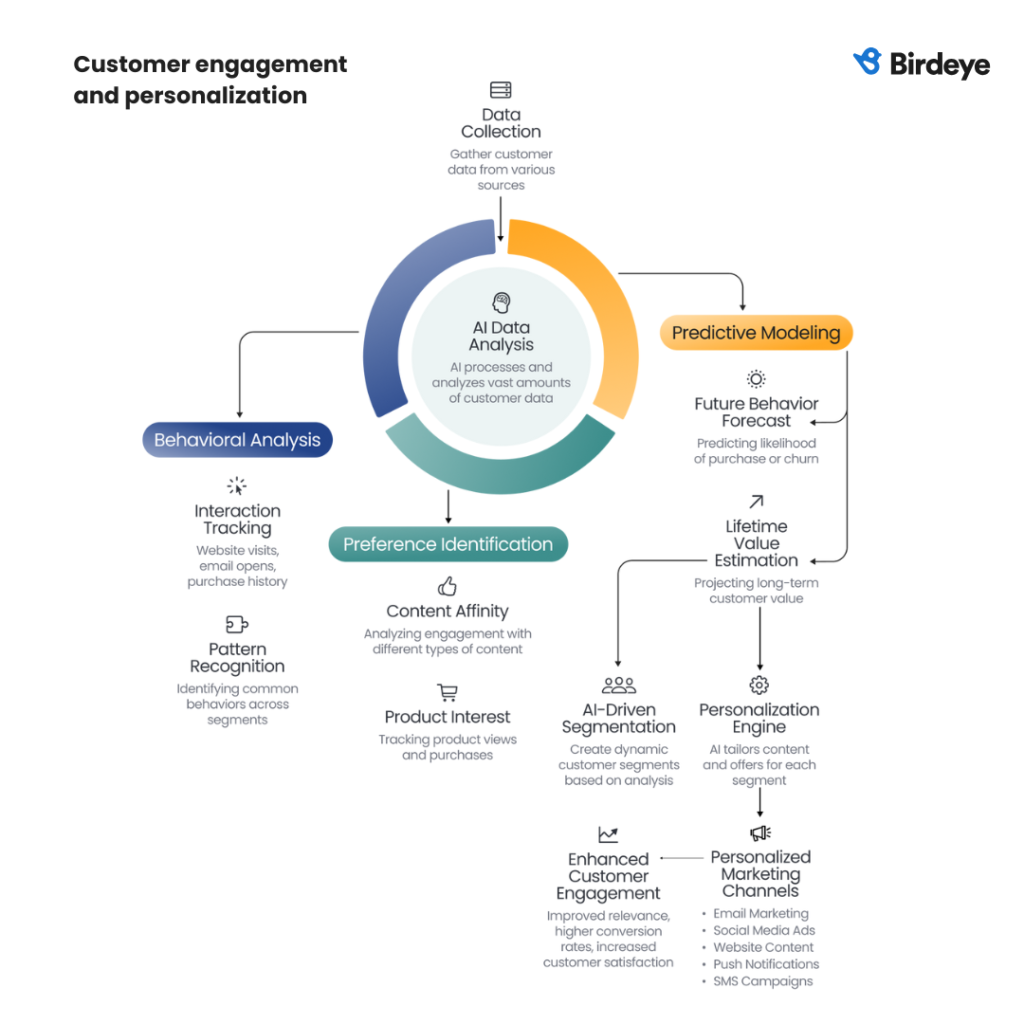
Plus, AI-powered chatbots now offer 24/7 customer support, handling routine questions and speeding up response times. This frees up human agents to focus on more complex issues, ensuring clients get the best possible support when they need it.
The following infographic shows how AI chatbots manage customer inquiries, offering instant responses for simple issues, escalating complex ones to human agents, and continuously improving through feedback.
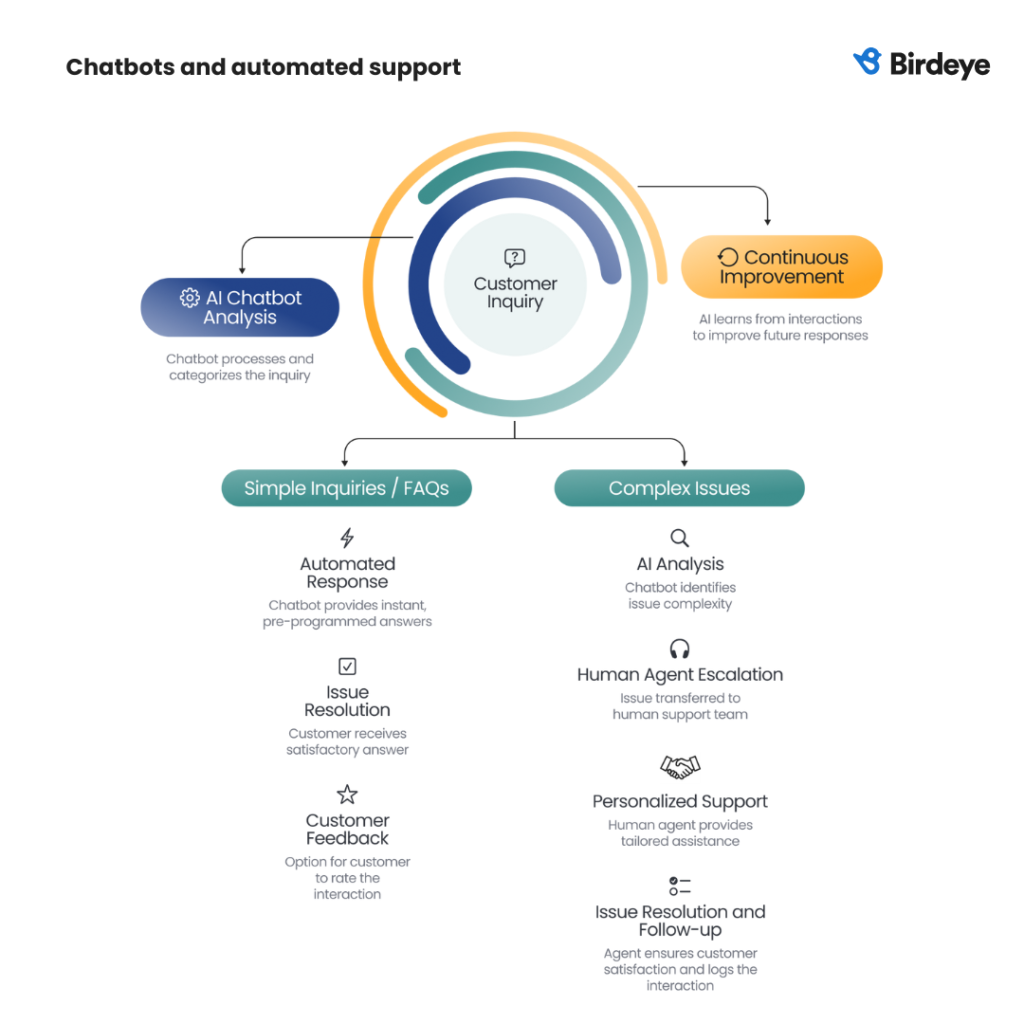
In addition to changing how agencies operate internally, AI is also driving measurable improvements in their overall performance.
How AI is impacting agency performance
AI is delivering real, measurable gains for agencies across the board – from boosting productivity to improving client retention and driving revenue growth. Let’s look at the concrete impact AI is having in key areas:
Productivity gains
- 51.4% of agencies say AI boosts creativity and frees up time for strategic work
- 42.9% of agencies report faster delivery of products and services, helping them handle more projects while maintaining quality
Strengthening client relationships
- 47% of agencies have gained new clients thanks to AI-powered, scalable solutions
- 57% of agencies credit AI for better client retention through personalized services and improved experiences
Revenue impact
- 55% of agencies report AI has positively impacted their revenue through expanded capacity and new value-added services
The numbers speak for themselves. Agencies are quickly embracing AI because it helps them work smarter, attract and retain clients, and drive steady growth. That’s why more agencies are making AI a core part of their workflows and client interactions.
Benefits and challenges of using AI for agencies
AI is transforming how agencies work, boosting everything from creativity to productivity and customer insights. Let’s look at both sides of the AI coin – the benefits and the challenges agencies are facing.
The benefits
- Enhanced creativity: 51.4% of agencies say AI has sparked more creativity by freeing up their teams from routine tasks.
- Increased productivity: 51.1% of agencies report higher productivity as AI handles repetitive work.
- Faster service delivery: 42.9% of agencies can deliver services faster thanks to streamlined workflows.
- Better customer insights: 33.6% of agencies use AI to gain deeper customer insights for more targeted campaigns.
The following infographic shows the three main benefit clusters of AI for agencies—productivity/efficiency, improved customer experience/service, and cost/headcount savings.
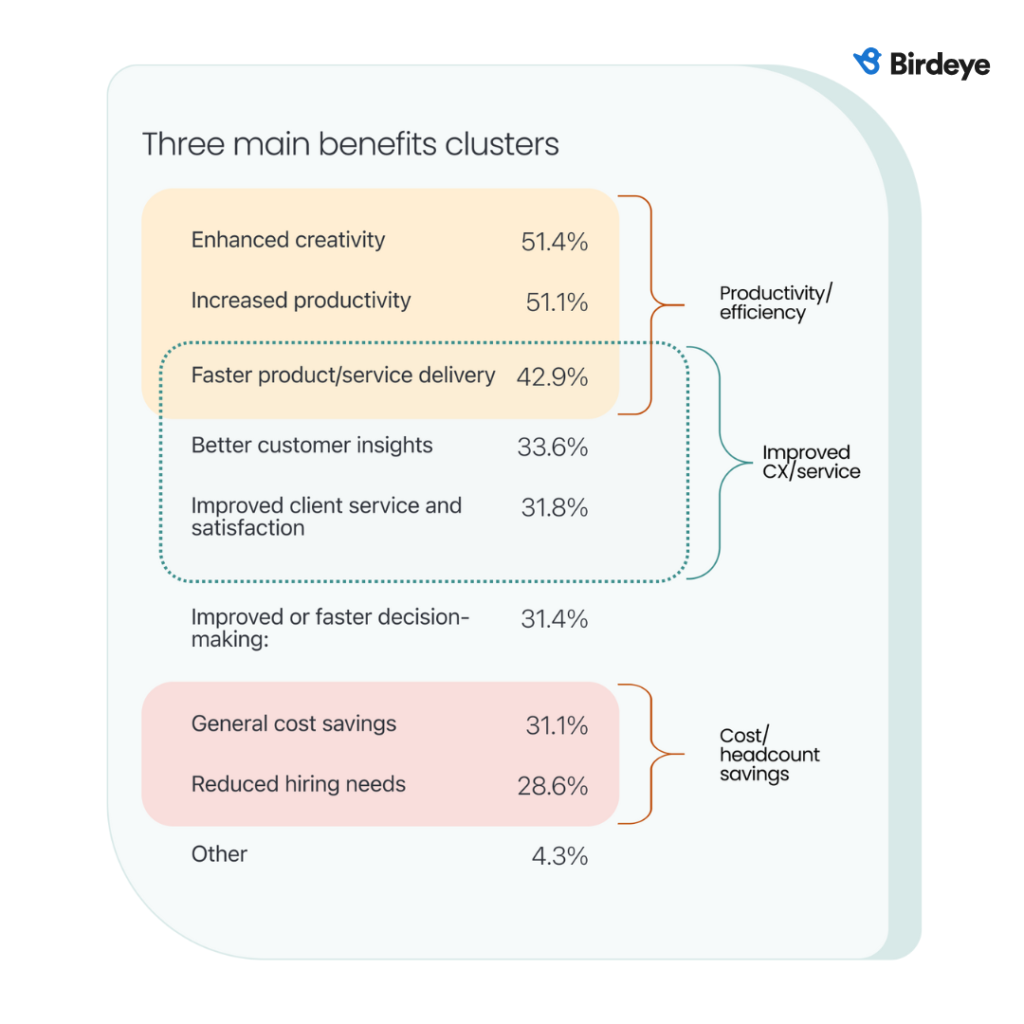
The challenges
- Increased competition: 34.6% of agencies worry about keeping up with competitors who adopt AI faster.
- Devaluation of services: 33.6% of agencies are concerned that AI will make certain services, like content creation, less valuable.
- In-housing of services: 30.7% of agencies see a risk in clients taking more work in-house as AI tools become easier to use.
The following infographic shows the top three concerns agencies have about AI adoption, highlighting challenges like AI-savvy competitors, potential reduction in service value, and clients bringing AI-driven tasks in-house.
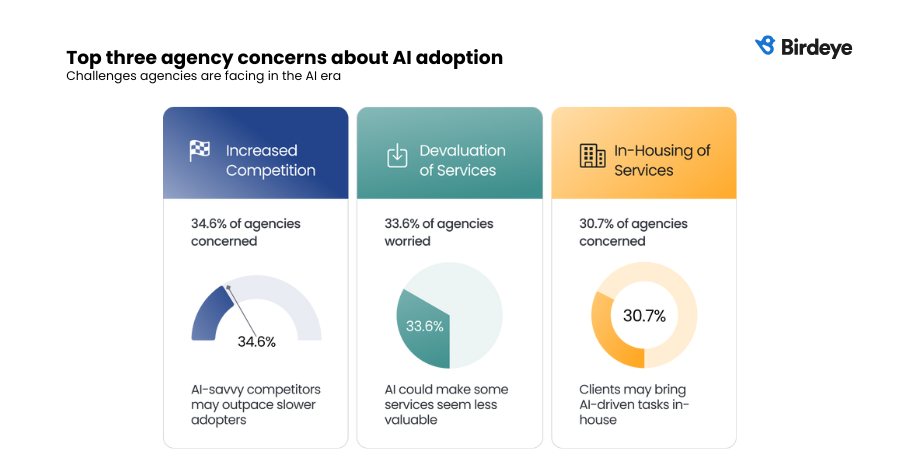
So, what’s the key to success? It’s about finding the right balance. Smart agencies are using AI to boost efficiency while leveraging their unique human expertise to deliver services that truly stand out. This combination helps them stay competitive and offer real value that AI alone can’t match.
Looking ahead: The future of AI in agencies
The role of AI in agencies is set to grow even bigger. As the technology advances, agencies will have more powerful tools to strengthen client relationships, deliver better services, and drive growth. To stay competitive, agencies need to stay ahead of AI developments—that’s why many are investing in training, education, and responsible AI practices.
Here’s what agencies anticipate as AI continues to evolve:
- Increased AI investment: 79% of agencies plan to increase their AI spending in the next 12 months.
- Expected performance gains: 83% of agencies expect significant performance gains within three years.
- Expanding market opportunities: 86% of agencies are looking to serve smaller-budget clients using AI-powered efficiency.
- Need for AI literacy and ethics: 78% of agencies believe they’ll fall behind if they don’t embrace AI.
The message is clear: AI will create even more opportunities for agencies to personalize their services and stand out from the competition in the coming years. Those who embrace AI now and use it responsibly will be better positioned for whatever comes next. The key is not just adopting AI, but using it strategically to deliver real value for clients.
Unlocked AI-driven growth with Birdeye
Amplify your agency’s performance with Birdeye’s advanced GenAI solutions.
Practical tips for agencies to get started with AI
Ready to make AI work for your agency? Here’re some simple steps to get you moving in the right direction:
- Invest in training: Keep your team AI-savvy by organizing workshops or partnering with AI experts. This ensures everyone is up-to-date with the latest tools.
- Focus on client retention: Use AI to personalize services and gain deeper insights into client needs, building loyalty and keeping clients coming back.
- Offer scalable services for smaller budgets: AI-driven automation lets you serve clients with smaller budgets without sacrificing quality, helping you attract more clients and broaden your offerings.
- Stay agile: AI is always evolving, so stay flexible. Regularly explore new AI tools and trends to keep a competitive edge.
- Highlight human value: Differentiate your services by showcasing human expertise and creativity alongside AI, emphasizing what sets you apart from purely automated solutions.
- Commit to ethical use of AI: Show clients you use AI responsibly with clear data privacy policies, building trust through transparency.
AI is here, and it’s redefining the way agencies work with clients, create strategies, and achieve success. Embracing this technology has now become an outright necessity for agencies that want to stay competitive. It has the power to sharpen their competitive edge, deepen client relationships, and keep them ahead of the pack.
Survey methodology Birdeye partnered with Near Media to survey 294 U.S.-based agencies in Q2 2024 on AI adoption. Respondents included agency leaders and professionals from various roles, with 61% of agencies in business under 10 years and 50% serving local businesses and SMBs. This data reflects current AI usage and future plans from key industry decision-makers.
FAQs on embracing AI in agencies
Track KPIs such as productivity gains, client acquisition, client retention rates, and revenue growth. Cost savings from task automation and the accuracy of AI-driven insights are also key indicators.
Agencies can build AI confidence through training and pilot projects. Involving teams in AI decisions and demonstrating AI’s role as a support, not a replacement, can reduce resistance.
Develop transparent policies around data privacy and bias. Agencies should communicate these guidelines to clients and staff to build trust and showcase responsible AI use.
Smaller agencies typically start with user-friendly AI tools for tasks like content creation and social media. This approach allows them to scale AI use as their comfort and needs grow, even without specialized staff.
Focus on tools that offer immediate, high-impact benefits, like productivity enhancements and customer insights. Staying agile and adapting to new AI developments is also crucial for long-term success.
How Birdeye can help agencies lead with AI
Birdeye offers AI-powered solutions tailored to meet agency needs, helping teams streamline operations, enhance client interactions, and make data-driven decisions.
Here’s how Birdeye can support agencies in their AI journey:
- Reviews AI: Gather, analyze, and respond to client feedback in real time, enhancing customer satisfaction and staying in sync with client needs.
- Social AI: Streamline content creation, engagement, and reporting across social channels, enabling agencies to save time and amplify their social impact.
- Insights AI: Access data-driven insights on customer sentiment, reputation, and visibility to make informed, strategic decisions that drive growth.
- Competitors AI: Benchmark your agency’s performance against industry standards, helping you fine-tune strategies to stay competitive.
Watch a free demo to learn more about Birdeye’s suite of GenAI tools.

Originally published
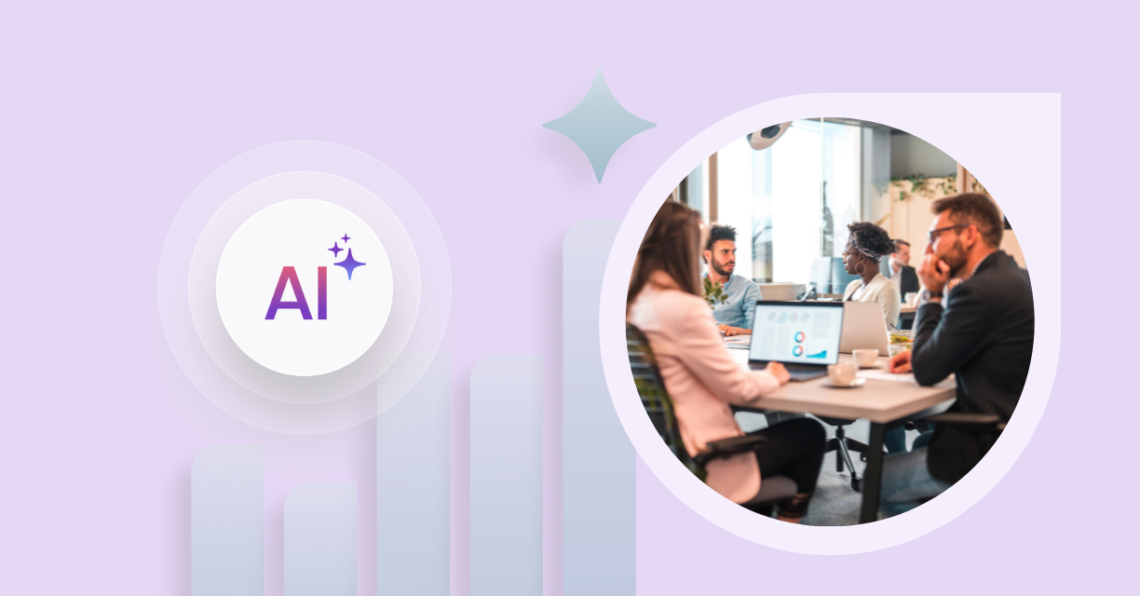


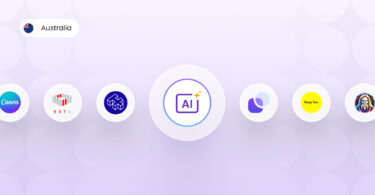
![[Feature image ] Customer-centric marketing- how to win, retain, and grow your customer base in 2025](https://birdeye.com/blog/wp-content/uploads/Feature-image-Customer-centric-marketing-how-to-win-retain-and-grow-your-customer-base-in-2025-375x195.jpg)




